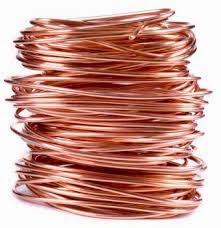Aluminum's contango has fallen to 18-month lows amid dwindling exchange stocks, the latest in a recent series of bouts of volatility that have reignited a years-long debate about how tight the market really is.
The cash price on the London Metal Exchange was at a discount of $16.75 per tonne to three-month forward prices on Monday, more than half the size of the spread than a month ago and its smallest since December 2012.
The sudden narrowing was the third time spreads have tightened since April when spread volatility suddenly returned after a nine-month absence.
The aluminum market has been in a marked contango for at least the past five years, giving traders the opportunity to store vast stocks of the metal while it accrues value and sell it forward at a profit in so-called financing deals.
There is little sign that a prolonged backwardation, with cash prices trading at a premium over forward prices, will materialize any time soon, particularly while the LME stocks remain near record highs and inventory is locked in financing deals outside of the market.
Even so, the reasons behind the narrowing contango have polarized the market while LME stockpiles remain near all-time highs.
LME stocks have slumped 10 percent this year to 4.94 million tonnes on Monday, their lowest in almost two years, but that is still close to record highs and historically very high.
Some physical traders say it is the latest sign yet that smelter cuts due to weak LME prices have started to pinch supplies of fresh nearby production while endusers have been buying on a hand-to-mouth basis.
But others say those vast stockpiles continue to distort the real supply-and-demand picture.
"Aluminum is massively skewed by the slug of inventory hedged on or using the LME. It's not as tight as the spreads look," said Standard Bank analyst Leon Westgate.
Traders taking delivery of the metal leaving the warehouses are putting a big portion of it into new financing deals in facilities outside of the LME network where storage costs less, traders said.
"We've got very unusual circumstances: higher cash prices, tighter spreads and higher premiums," said a U.S. trader.
RETURN OF VOLATILITY
The sudden volatility is also significant after nine months of a steady forward curve. The cash-to-three-month contango remained pretty steady in a $40 to $50 range between July last year and April this year.
Analysts and traders expect the fluctuations to stay for now.
While the reason for their sudden return was not immediately clear, it followed one of the most critical periods for the LME in its 137-year history and for commodities trading.
In July last year, the exchange announced the most extensive overhaul of its warehousing network aimed at placating consumers who blamed the LME's policy for logjams that had inflated physical aluminum prices.
In the United States, physical premiums paid on top of the LME benchmark for delivery have soared to all-time highs.
The rule changes that would have increased the rate at which warehouses would deliver metal out were due to come into effect on April 1, but measures have been delayed due to a legal challenge from Rusal.
Renewed swings in spreads also come after a steady retreat by Wall Street banks, including Morgan Stanley and JPMorgan Chase & Co, from commodities trading due to regulatory scrutiny and weaker profit margins.
"Quite why was it benign for such a long period of time isn't clear, though what is obvious now is that there's been a marked change in behavior," said Westgate.





